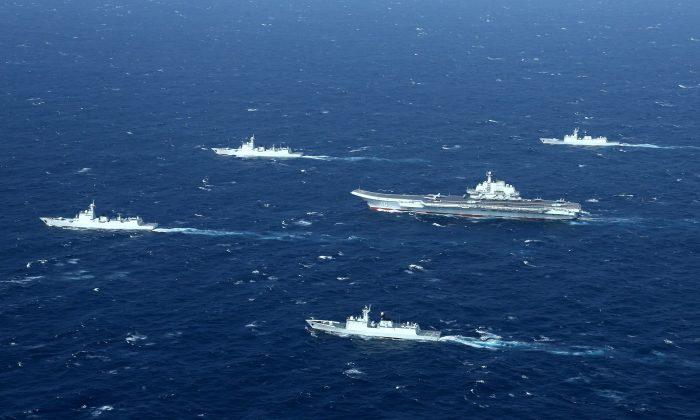As has been noted by many observers, the economic, financial, ethnic, and civil unrest challenges that China faces are serious and growing. How will Beijing handle these internal challenges?
The Post-War Security Era Is Over
With last month’s launch of its newest aircraft carrier, the Shandong, it’s becoming clear that China is making a play for a bigger role in the future of the Asian-Pacific region, and specifically in the South China Sea. It’s getting very close to realizing its goal.Since the end of World War II, the Asia-Pacific region has relied upon U.S. naval dominance to keep the sea lanes open. Just as importantly, U.S. naval power has been key to Taiwan’s security—as well as Japan’s—against a bellicose China. America’s unrivaled naval presence has led to vital and prosperous shipping to and from Asia to the rest of the world for decades.
Beijing’s Growing Projection of Power
Today, China’s foray into a strategic naval presence is directly challenging the United States’ foreign policy and military alliances in the region. By undercutting the ability of the United States to deter and defend against China’s now-formidable naval power, China is threatening the viability of U.S. security arrangements with both Japan and Taiwan, and by extension, even Australia.Rising Instability
But it’s not only China’s latest aircraft carrier that is destabilizing the regional status quo. In October, China unveiled advanced unmanned aerial vehicles, anti-ship cruise missiles, and new editions of its hypersonic anti-carrier missile systems. All of these weapon systems are intended to neutralize any naval advantages the United States might bring to bear in the region.The Dongfeng-21D (DF-21D) missile, for example, is colorfully named “the carrier killer,” in reference, of course, to U.S. aircraft carrier groups that operate in the region. It can hit U.S. warships within a range of 1,500 kilometers (932 miles). The equally provocative mid-range missile is nicknamed the “Guam killer,” referring to its ability to reach the large U.S. military presence on the South Pacific island of Guam.
But even more destabilizing is China’s DF-17, a hypersonic missile with the reported capacity to make evasive maneuvers while traveling at several times the speed of sound. This could make it difficult or impossible for U.S. missile defense systems to be effective against it.
Like China’s aircraft carrier force, the development and display of these weapons raise the risk of confrontation, especially from Beijing. The geopolitical and military implications for the region are clear: the U.S. defense guarantees are no longer indisputable. In fact, in the minds of some allies, such as Japan, they are already in jeopardy.
Beijing Moving Against US Power on All Fronts
Such doubts about America’s ability to defend its allies in the region have far-reaching implications. They’ve already impacted how the United States conducts itself in the region, with changes in U.S. naval maneuvers reflecting this reality. Clearly, China’s strategy is to shatter the existing U.S. alliances and force a strategic realignment throughout the region. Beijing wants all of the Asia-Pacific region to turn away from American security guarantees and acknowledge undisputed Chinese hegemony.Thus, China’s pushback against the United States in the region is both strategic and tactical in military terms, as well as active on the diplomatic and economic fronts. But none of these developments help resolve the problems the CCP faces at home. As nations often do, China may resort to foreign intervention to divert attention from those internal challenges.
Externalizing Its Challenges?
This is not hyperbole. Keep in mind that the Communist Party is a very small minority in China, and that it’s under growing pressures that it’s finding hard to relieve. The foundation of the Party’s legitimacy—a rising standard of life for an expanding middle class—is starting to fracture. With food inflation, rising unemployment, persistent and widespread corruption, and ungodly pollution, among other problems, the fissures of dissatisfaction with the Party are widening.At the same time, the Party’s menu of options for solutions to its problems is shrinking. What’s more, it’s choosing the wrong options, which are only worsening its problems.
In fact, it already has.
How will the United States respond?






Friends Read Free